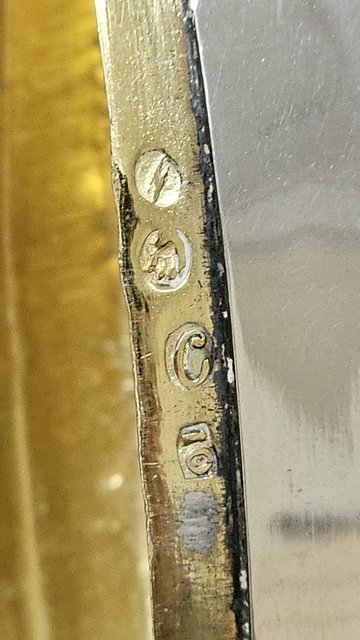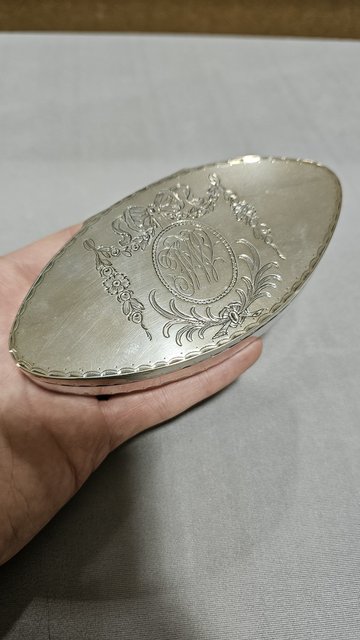Hi,
These are Dutch marks.

See Hallmarks of the Kingdom of Holland introduced 1807-1812
viewtopic.php?p=80300#p80300
Top to bottom;
.1) Silver fineness 10
penningen or 833/1000
.2) Year letter C used in 1810
.3) The maker's mark 'a hand' for Arnoldus van den Berg, registered in Schoonhoven , 1803-1807 and registered in Utrecht, 1810-1811 (according Karel Citroen*)
.4) Assay Office mark for the city of Utrecht.
Arnoldus van den Berg(h) took the oath as a silversmith in Schoonhoven on 17 March 1804 and used ‘a hand’ as a master mark. He became an apprentice of Gerrit Swaantjes the Younger in 1786. He left for Oudewater on 30 March 1804 where he married Aafje Koning. Oudewater fell under the Gildekeurkamer/Assay office of Schoonhoven and later under the Keurkamer of the Kingdom of Holland in Schoonhoven. He never paid a patent in Schoonhoven; he probably did so in Oudewater, where we find him in 1807 at the very least. We note 1804 as the year of commencement for him.
Rene Kappers;
https://historischeverenigingschoonhove ... Regels.pdf
It must be said that there is no proof that Arnoldus was registered as a silversmith in Utrecht in 1810-1812. As mentioned, the silversmiths of Oudewater fell under Schoonhoven. In 1812, when registering the birth of his child in Oudewater his occupation was stated as Tapper = Seller of beer, spirits and wine.
The maker's mark

It looks like an open spread hand.
Peter.
Source ;
*Karel Citroen, Dutch goldsmiths and silversmiths marks and names prior to 1812, page 141
Waarborgholland, ˜Netherlands' Responsibility Marks since 1797.







